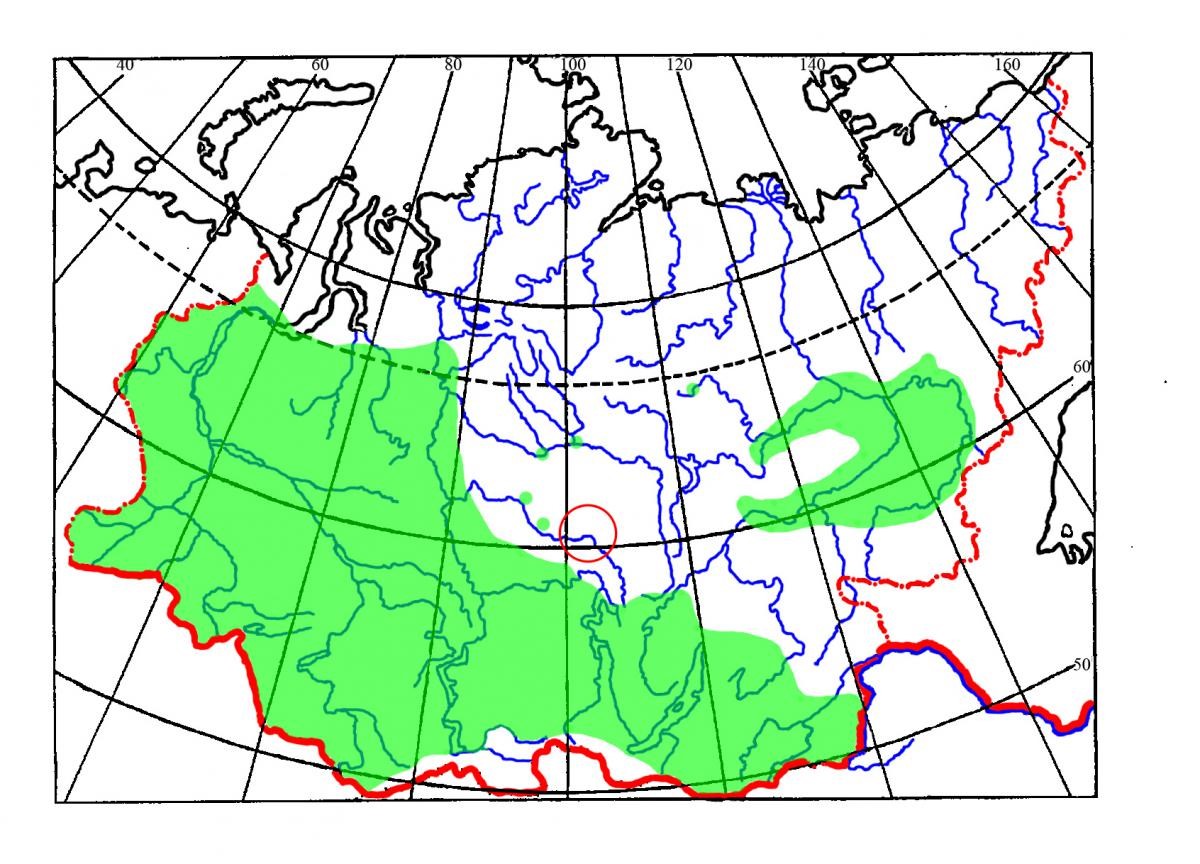METABOLOME COMPOSITION OF STINGING NETTLE GROWING IN THE CENTRAL CHERNOZEM REGION (REVIEW)
UDC 615.19.072
Abstract
The plant metabolome is the totality of all primary and secondary metabolites and can be considered as a result of the implementation of genetic information, a «link» between the genotype and phenotype. The chemical composition of most medicinal plants and herbal medicinal preparations derived from them, which are multicomponent extracts, is not always fully known. Stinging nettle is one of the valuable plants with a wide distribution area. The metabolome of nettle medicinal plant materials includes a large number of classes of various biologically active substances (BAS). The study of profiles of secondary metabolites is an important direction for studying the variability of the phytochemical composition depending on the climatic conditions of growth, harvesting and drying. In the work, the collection and analysis of scientific information on the study of the profiles of various groups of biologically active substances and their identification in extracts from the raw material of stinging nettle (leaves and grass) growing on the territory of the Central Black Earth region of Russia was carried out by TLC using the so-called «fingerprint» method or «bar coding». The literature data on the results of a comprehensive study of the composition of the metabolome of this raw material (flavonoids, chlorophyll compounds, carotenoids, tannins, oxycinnamic acids, amino acids, organic acids, triterpene glycosides, polysaccharide complex, vitamins and some macroelements) by various groups of scientists over the past 20 years are summarized and systematized. Stinging nettle, growing in the conditions of the Central Chernozem region, as analysis showed, accumulate free amino acids, tannins, organic acids and polysaccharides in significant quantities. The composition of free water-soluble simple sugars, organic acids, vitamins of group B, as well as the complete amino acid composition was studied in the leaves of stinging nettle by capillary electrophoresis. A significant content of riboflavin and choline, as well as butyric and succinic acids has been established. Flavonoids in the leaves of stinging nettle growing in the conditions of the Central Chernozem region are represented by glycosides, the aglycones of which are mainly quercetin, isorhamnetin and kaempferol. The main representatives of the group of hydroxycinnamic acids in the leaves of stinging nettle in this region are chlorogenic acids, 2-coffee-malic and rosemary acids. As chemomarkers, neochlorogenic and cryptochlorogenic acids – isomers of caffeoylquinic acids, as well as caffeic, cafftaric and n-coumaric acids can be used.
Downloads
Metrics
References
Orlova A.A., Strugar Y., Shtark O.Yu., Zhukov V.A., Luzhanin V.G., Povydysh M.N. Razrabotka i registratsiya le-karstvennykh sredstv, 2021, vol. 10, no. 1, pp. 97–105. DOI: 10.33380/2305-2066-2021-10-1-97-105. (in Russ.).
Kolomiyets N.E., Kalinkina G.I., Sapronova N.N. Farmatsiya, 2011, no. 6, pp. 22–24. (in Russ.).
Trineyeva O.V., Voropayeva S.S., Slivkin A.I. Sorbtsionnyye i khromatograficheskiye protsessy, 2013, vol. 13, no. 2, pp. 213–219. (in Russ.).
Kopyt'ko Ya.F., Lapinskaya Ye.S., Sokol'skaya T.A. Khimiko-farmatsevticheskiy zhurnal, 2011, vol. 45, no. 10, pp. 32–40. (in Russ.).
Petsukha V.S., Chebykin Ye.P., Fedoseyeva G.M. Sibirskiy meditsinskiy zhurnal, 2008, no. 6, pp. 88–90. (in Russ.).
Skalozubova T.A., Marakhova A.I., Sorokina A.A., Fedorovskiy N.N. Farmatsiya, 2012, no. 2, pp. 5–7. (in Russ.).
Gladyshev A.A., Gusev N.F., Korolev A.S., Nemereshina O.N. Izvestiya Orenburgskogo gosudarstvennogo agrar-nogo universiteta, 2012, vol. 4, no. 36-1, pp. 215–218. (in Russ.).
Trineyeva O.V., Slivkin A.I., Voropayeva S.S. Vestnik VGU. Seriya: Khimiya. Biologiya. Farmatsiya, 2013, no. 2, pp. 215–219. (in Russ.).
Fedoseyeva G.M., Petsukha V.S. Sbornik nauchnykh trudov: «Farmatsiya iz veka v vek. Analiz i standartizatsiya le-karstvennykh sredstv». [Collection of scientific papers: “Pharmacy from century to century. Analysis and standardiza-tion of medicines”]. St. Petersburg, 2008, vol. III, pp. 170–172. (in Russ.).
Yatsyuk V.Ya., Chalyy G.A., Soshnikova O.V. Rossiyskiy mediko-biologicheskiy vestnik imeni akademika I.P. Pavlova, 2006, no. 1, pp. 25–29. (in Russ.).
Gubin K.V., Khanina M.A. Meditsina i obrazovaniye v Sibiri, 2011, no. 5. URL: https://mos.ngmu.ru/article/text_full.php?id=538. (in Russ.).
Gubin K.V., Khanina M.A. Khimiya rastitel'nogo syr'ya, 2009, no. 2, pp. 89–92. (in Russ.).
Luneva N.N., Zakota T.Yu., Fedorova Yu.A. Trudy po prikladnoy botanike, genetike i selektsii, 2020, vol. 181(4), pp. 144–155. DOI: 10.30901/2227-8834-2020-4-144-155. (in Russ.).
Smoylovska G.P. Zaporozhskiy meditsinskiy zhurnal, 2017, vol. 19, no. 1(100), pp. 90–93.
Ushanova V.M., Lebedeva O.I., Repyakh S.M. Khimiya rastitel'nogo syr'ya, 2001, no. 3, pp. 97–104. (in Russ.).
Ligostayeva Yu.V., Kachkin K.V. Naukosfera, 2021, no. 6-1, pp. 36–39. DOI: 10.5281/zenodo.4954334. (in Russ.).
Markova Ye.V., Lazarev A.V. Nauchnyye vedomosti. Seriya Yestestvennyye nauki, 2010, no. 15(86), pp. 34–39. (in Russ.).
Balagozyan E.A., Kurkin V.A., Pravdivtseva O.Ye., Orekhova A.D. Voprosy biologicheskoy, meditsinskoy i farmatsevticheskoy khimii, 2016, vol. 19, no. 12, pp. 15–18. (in Russ.).
Lezhneva L.P., Khadzhiyeva Z.D., Temirbulatova A.M. Nauchnyye vedomosti. Seriya Meditsina. Farmatsiya, 2017, no. 5 (254), pp. 129–133. (in Russ.).
Gosudarstvennaya farmakopeya Rossiyskoy Federatsii. XIII izd. [State Pharmacopoeia of the Russian Federation. XIII ed.]. Moscow, 2015. URL: http://www.femb.ru/feml. (in Russ.).
Gosudarstvennaya farmakopeya Rossiyskoy Federatsii. XIV izd. [State Pharmacopoeia of the Russian Federation. XIV ed.]. Moscow, 2018. URL: http://femb.ru/femb/pharmacopea.php. (in Russ.).
Soshnikova O.V. Izucheniye khimicheskogo sostava i biologicheskoy aktivnosti rasteniy roda krapiva: avto-ref. diss. … kand. farm. nauk. [Study of the chemical composition and biological activity of plants of the genus nettle: auto-ref. diss. … cand. farm. Sciences]. Kursk, 2006, 22 p. (in Russ.).
Trineyeva O.V. Razrabotka i registratsiya lekarstvennykh sredstv, 2020, vol. 9, no. 3, pp. 67–109. DOI: 10.33380/2305-2066-2020-9-3-67-109. (in Russ.).
Trineyeva O.V., Safonova I.I., Slivkin A.I., Safonova Ye.F. Sorbtsionnyye i khromatograficheskiye protsessy, 2013, no. 6, pp. 896–901. (in Russ.).
Trineyeva O.V., Safonova Ye.F., Slivkin A.I. Sorbtsionnyye i khromatograficheskiye protsessy, 2014, vol. 14, no. 1, pp. 144–149. (in Russ.).
Trineyeva O.V. Razrabotka i registratsiya lekarstvennykh sredstv, 2021, vol. 10, no. 2, pp. 69–79. DOI: 10.33380/2305-2066-2021-10-2-69-79. (in Russ.).
Trineyeva O.V. Razrabotka i registratsiya lekarstvennykh sredstv, 2020, vol. 9, no. 2, pp. 91–97. DOI: 10.33380/2305-2066-2020-9-2-91-97. (in Russ.).
Trineyeva O.V. Teoreticheskiye i metodologicheskiye podkhody k standartizatsii i otsenke kachestva lekarstven-nogo rastitel'nogo syr'ya i maslyanykh ekstraktov na yego osnove: diss. … doktora farm. nauk. [Theoretical and methodo-logical approaches to standardization and quality assessment of medicinal plant raw materials and oil extracts based on it: diss. … Dr. Pharm. Sciences]. Moscow, 2017, 441 p. (in Russ.).
Trineyeva O.V., Slivkin A.I., Safonova Ye.F. Razrabotka i registratsiya lekarstvennykh sredstv, 2020, vol. 9, no. 3, pp. 59–66. DOI: 10.33380/2305-2066-2020-9-3-59-66. (in Russ.).
Trineyeva O.V., Sinkevich A.V., Slivkin A.I., Safonova Ye.F. Khimiya rastitel'nogo syr'ya, 2015, no. 2, pp. 141–148. (in Russ.).
Sergunova Ye.V., Marakhova A.I., Avrach A.S. Farmatsiya, 2013, no. 4, pp. 8–11. (in Russ.).
Trineyeva O.V., Slivkin A.I. Farmatsiya, 2014, no. 1, pp. 16–19. (in Russ.).
Trineyeva O.V., Slivkin A.I., Voropayeva S.S. Vestnik VGU. Seriya: Khimiya. Biologiya. Farmatsiya, 2014, no. 1, pp. 138–144. (in Russ.).
Trineyeva O.V., Slivkin A.I., Dmitriyeva A.V. Voprosy biologicheskoy, meditsinskoy i farmatsevticheskoy khimii, 2015, no. 5, pp. 19–25. (in Russ.).
Trineyeva O.V., Slivkin A.I., Safonova Ye.F. Khimiya rastitel'nogo syr'ya, 2015, no. 3, pp. 105–110. (in Russ.).
Trineyeva O.V., Perova I.B., Slivkin A.I., Eller K.I. Biofarmatsevticheskiy zhurnal, 2017, vol. 9, no. 3, pp. 44–48. (in Russ.).
Velikaya T.V., Kozhanova K.K., Zheterova S.K., Dregert O.A. Mezhdunarodnyy nauchno-issledovatel'skiy zhurnal, 2016, no. 1(43), pp. 78–80. DOI: 10.18454/IRJ.2016.43.015. (in Russ.).
D'yakova N.A. Novosti nauki v APK, 2019, no. 3(12), pp. 358–362. DOI: 10.25930/2218-855X/091.3.12.2019. (in Russ.).
D'yakova N.A. Ul'yanovskiy mediko-biologicheskiy zhurnal, 2020, no. 2, pp. 145–156. DOI: 10.34014/2227-1848-2020-2-145-156. (in Russ.).
D'yakova N.A., Slivkin A.I., Chupandina Ye.Ye., Gaponov S.P. Khimiya rastitel'nogo syr'ya, 2020, no. 4, pp. 179–186. DOI: 10.14258/jcprm.2020047609. (in Russ.).
Bobina Ye.A., Shishorina L.A., D'yakova N.A. Smolenskiy meditsinskiy al'monakh, 2021, no. 1, pp. 48–51. (in Russ.).
D'yakova N.A., Gaponov S.P., Slivkin A.I., Bobina Ye.A., Shishorina L.A. Traditsionnaya meditsina, 2020, no. 2 (61), pp. 47–51. (in Russ.).
Patent 2530620 (RU). 2014. (in Russ.).
Trineyeva O.V., Sinkevich A.V. Materialy mezhdunar. zaochnoy nauchno-prakticheskoy konferentsii «Nauka, obrazovaniye, obshchestvo: tenden-tsii i perspektivy». (3 fevralya 2014 g.). [Proceedings of the Intern. correspondence scientific-practical conference "Science, education, society: trends and prospects". (February 3, 2014)]. Moscow, 2014, pp. 131–133. (in Russ.).
Trineyeva O.V., Voropayeva S.S., Slivkin A.I. Nauchnyye vedomosti Belgorodskogo gosudarstvennogo uni-versiteta. Seriya: Meditsina. Farmatsiya, 2014, vol. 26, no. 11(182), pp. 237–241. (in Russ.).
Trineyeva O.V., Slivkin A.I., Dortgulyyev B. Vestnik Voronezhskogo gosudarstvennogo universiteta. Seriya: Khimiya. Biologiya. Farmatsiya, 2015, no. 1, pp. 152–155. (in Russ.).
Trineyeva O.V., Sinkevich A.V., Safonova Ye.F., Slivkin A.I. Khimiko-farmatsevticheskiy zhurnal, 2015, vol. 49, no. 5, pp. 37–41. (in Russ.).
Trineyeva O.V., Safonova Ye.F., Voropayeva S.S., Slivkin A.I. Farmatsiya, 2013, no. 1, pp. 11–12. (in Russ.).
Trineyeva O.V., Slivkin A.I., Karlov P.M. Vestnik Voronezhskogo gosudarstvennogo universiteta. Seriya: Khimiya. Bio-logiya. Farmatsiya, 2013, no. 2, pp. 220–224. (in Russ.).
Pinelli P. et al. J. Agric. Food Chem., 2008, vol. 56, no. 19, pp. 9127–9132.
Grevsen K., Fretté X.C., Christensen L.P. Europ. J. Hort. Sci., 2008, vol. 73, no. 1, pp. 20–27.
Trineyeva O.V., Rudaya M.A., Slivkin A.I. Vestnik Voronezhskogo gosudarstvennogo universiteta. Seriya: Khimiya. Biologiya. Farmatsiya, 2017, no. 3, pp. 131–134. (in Russ.).
Trineeva O.V., Slivkin A.I. Pharmaceutical Chemistry Journal, 2019, vol. 53, no. 4, pp. 361–367. DOI: 10.1007/s11094-019-02006-y.
Teroshkina O.I., Samylina I.A., Rudakova I.P., Gravel' I.V. Biomeditsina, 2011, no. 3, pp. 80–85. (in Russ.).
Teroshkina O.I., Rudakova I.P., Samylina I.A. Farmatsiya, 2011, no. 7, pp. 3–6. (in Russ.).
Teroshkina O.I., Rudakova I.P., Gravel' I.V., Samylina I.A. Farmatsiya, 2010, no. 2, pp. 7–11. (in Russ.).

Copyright (c) 2022 chemistry of plant raw material

This work is licensed under a Creative Commons Attribution 4.0 International License.

This work is licensed under a Creative Commons Attribution 4.0 International License.
The authors, which are published in this journal, agree to the following conditions:
1. Authors retain the copyright to the work and transfer to the journal the right of the first publication along with the work, at the same time licensing it under the terms of the Creative Commons Attribution License, which allows others to distribute this work with the obligatory indication of the authorship of this work and a link to the original publication in this journal .
2. The authors retain the right to enter into separate, additional contractual agreements for the non-exclusive distribution of the version of the work published by this journal (for example, to place it in the university depository or to publish it in a book), with reference to the original publication in this journal.
3. Authors are allowed to post their work on the Internet (for example, in a university repository or on their personal website) before and during the review process of this journal, as this may lead to a productive discussion, as well as more links to this published work.











